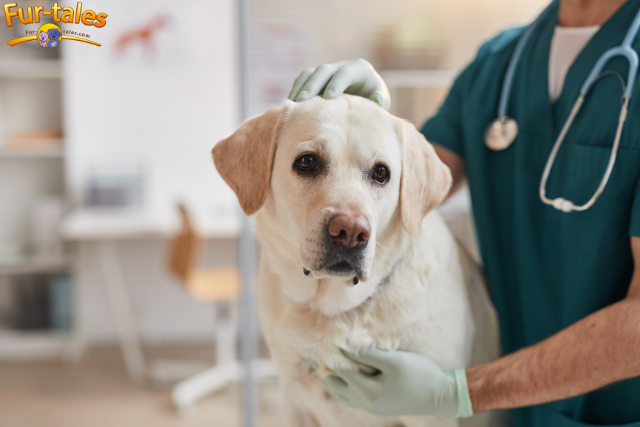
Recognizing Subtle Signs of Pain in Your Pet
As pet owners, we are our pets’ first line of defense when it comes to health and well-being. Our furry friends rely on us to interpret their behavior, understand their needs, and speak up when something seems off. Unlike humans, pets cannot express their pain in words, making it our responsibility to notice the subtle changes that indicate discomfort. Often, animals will instinctively hide signs of pain due to evolutionary survival strategies, which makes our job even more challenging. But being able to recognize these signals can make a world of difference in your pet’s comfort and quality of life. This article will help you identify overlooked signs of pain in pets and ensure timely care when they need it most.
Why Pets Hide Their Pain
In nature, pain is seen as a vulnerability. Wild animals often conceal injuries or weakness to avoid becoming targets for predators or being shunned by their group. This same instinct persists in domesticated pets like dogs, cats, rabbits, and even birds. Even though they are safe in your home, their biological programming tells them to mask signs of illness.
This natural tendency means pet owners must become skilled observers, learning what is normal for their animal and spotting even slight deviations. Sometimes, pain presents itself in quiet, hidden ways — a little less enthusiasm at dinner time, or choosing to rest more often. Understanding that your pet may hide pain helps you approach their behavior with awareness and empathy.
General Signs of Pain in Pets
While some symptoms are obvious—like limping or crying—many are subtle. They can differ between species and individual pets. Here are common indicators to watch for:
1. Changes in Appetite and Drinking Habits
A sudden decrease or increase in eating or drinking may point to discomfort. A dog with dental pain might refuse crunchy kibble, while a cat with arthritis might drink less because it’s painful to walk to the bowl. Similarly, gastrointestinal discomfort may cause pets to avoid food or water altogether.
2. Altered Behavior and Mood
Pets in pain may seem “off.” You might notice a typically energetic dog acting sluggish, or a playful cat suddenly spending more time alone. Pain can make pets irritable, anxious, withdrawn, or unusually aggressive. A normally aloof cat might suddenly cling to you, while a friendly dog might growl when touched.
3. Reluctance to Move or Exercise
Is your pet avoiding stairs or no longer greeting you at the door? A dog who once loved long walks may stop halfway, or a cat who used to nap on high shelves may stay grounded. Reduced mobility is a classic sign of joint, muscle, or internal pain.
4. Changes in Grooming Habits
Cats often stop grooming areas that hurt — or over-groom painful spots, leading to hair loss or skin irritation. Dogs may excessively lick their paws, joints, or other areas, sometimes to the point of injury. This repetitive behavior can indicate a localized issue.
5. Vocalization
Some pets vocalize when in pain — whining, groaning, yelping, growling, or hissing. These sounds, especially when not triggered by an obvious event, can be red flags. However, silence doesn’t mean they’re fine — some animals go quiet when hurting.
6. Posture and Body Language
Notice your pet’s posture. Are they hunched, limping, or guarding a specific part of their body? A tucked tail, stiff gait, or lying in unusual positions may indicate discomfort. Birds might puff up and stay unusually still.
7. Breathing Patterns
Pain can alter breathing. Dogs may pant without heat or exertion, and cats may breathe faster when stressed. Labored or shallow breathing warrants immediate veterinary attention.
8. Sleep Disturbances
Is your pet sleeping more than usual — or struggling to sleep at all? Pain can cause restlessness or difficulty getting comfortable. Pets might shift frequently during rest or seek unusual places to lie down.
Species-Specific Signs of Pain
Dogs:
- Decreased tail wagging or a low-hanging tail
- Trembling or shaking
- Avoiding stairs or jumping
Cats:
- Hiding more often
- Flattened ears or dilated pupils
- Reluctance to use the litter box
Small Pets (Rabbits, Guinea Pigs, etc.):
- Teeth grinding (a sign of pain, not contentment)
- Hunched posture
- Lack of interest in food or socialization
What to Do If You Suspect Your Pet Is in Pain
If your pet shows one or more of these signs, don’t panic — but do take action. The best step is to consult your veterinarian. Avoid giving over-the-counter human medications, as many (like ibuprofen or acetaminophen) are highly toxic to pets. Your vet will perform a thorough physical exam, ask about behavior changes, and possibly suggest diagnostic tools like blood tests, imaging, or joint evaluations.
Managing and Treating Pet Pain
Treatment depends on the underlying issue. Options may include:
- Pain medications formulated for pets
- Anti-inflammatory drugs
- Physical therapy
- Weight management
- Surgery for severe cases
- Complementary therapies like acupuncture or laser treatment
Your veterinarian will create a personalized plan to ease your pet’s pain.
Preventative Measures and Monitoring
Being proactive helps prevent pain-related issues:
- Schedule regular veterinary checkups
- Maintain a healthy weight to minimize joint stress
- Provide appropriate exercise
- Ensure dental care
- Use ramps or steps to help senior pets access favorite spots
Observing your pet’s normal behaviors makes it easier to recognize when something is wrong.
FAQs About Recognizing Pain in Pets
Q1: Can pets feel chronic pain without showing clear signs?
Yes. Chronic pain, such as arthritis, often results in very subtle signs like decreased activity or irritability rather than obvious symptoms.
Q2: Should I give my pet over-the-counter pain medications if they seem to be in pain?
No. Many human medications are dangerous or even fatal to pets. Always consult a veterinarian before administering any drugs.
Q3: How do I know if my cat is in pain since they hide symptoms well?
Look for behavior changes like hiding, avoiding being touched, reduced grooming, and reluctance to jump or move.
Q4: Can pets in pain become aggressive?
Yes. Pain can make pets more defensive and irritable, especially if the painful area is touched.
Q5: How can I help my pet feel more comfortable at home if they are in pain?
Provide a soft and quiet resting place, avoid stressful situations, and follow your vet’s recommendations for pain management.
Image Designed Using Canva
